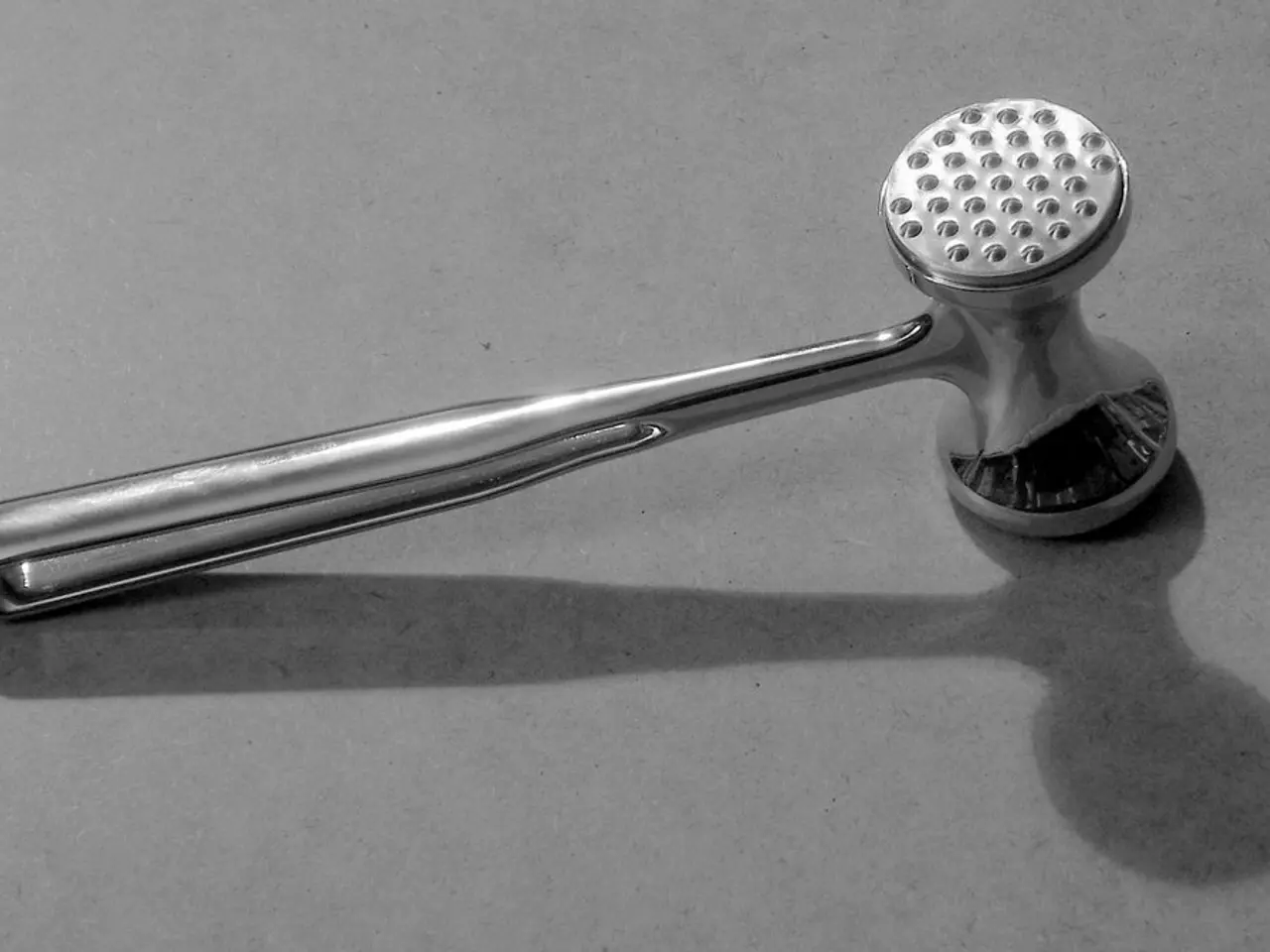Finger Mallet Condition: Clinical Manifestations and Physical Assessment
Mallet finger is a common fingertip injury that often occurs in sports, such as baseball, basketball, cricket, and volleyball. It is characterised by a bent fingertip that cannot be lifted on its own, causing difficulty in performing everyday tasks like holding objects, typing, writing, buttoning a shirt, and grasping items.
The condition arises when the extensor tendon, located on the outer side of the hand, breaks at the tip of the finger. This usually happens due to forced flexion of the distal phalanx while the tendon is trying to extend the finger. This results in an inability to straighten the fingertip, causing it to droop, a "drop finger" deformity.
Mallet finger can be mistaken for other injuries, like a jammed finger, due to mild pain. However, neglecting treatment can lead to a permanent deformity in the finger. Early medical treatment is essential for proper splinting, as it is a little challenging to treat mallet finger at home.
During a physical examination, the doctor will perform several tests to diagnose mallet finger. They will ask the patient to lift their finger and extend it during an active extension test, and inability to do so may indicate a mallet finger. The doctor will also perform a passive extension test, lifting the finger upwards and leaving it there, and if it bends down, there is confirmed damage to the tendon.
In some cases, radiographic examination (X-rays) may be necessary to confirm the diagnosis and rule out other potential issues, such as an avulsion fracture or other bony injury. This helps determine the extent of the injury and guide treatment decisions.
The treatment for mallet finger typically involves splinting, but surgery may be required in some cases. Mallet finger can also be accompanied by a nail injury, causing a swollen, blue area under the nail bed. Proper examination by a doctor is advised to get early treatment for mallet finger to avoid permanent deformity.
On the other hand, Jersey Finger involves injury to the flexor tendon of the finger, specifically the flexor digitorum profundus. It typically occurs when the finger is forcibly extended while actively flexing, such as grabbing a jersey during sports. This injury results in the inability to flex or bend the fingertip. The treatment for Jersey Finger often requires prompt surgical repair to prevent tendon retraction and restore function.
In summary, Mallet Finger is an extensor tendon injury causing the fingertip to droop, while Jersey Finger is a flexor tendon injury resulting in an inability to bend the fingertip. The mechanisms of injury, tendons involved, and resulting deformities are essentially opposite. It is crucial to seek medical attention for signs like a bent fingertip that cannot be straightened, persistent pain, swelling, and bruising to rule out fractures or other serious damage.
References:
[1] Mallet Finger. (2021). In StatPearls [Internet]. StatPearls Publishing.
[2] Mallet Finger. (2021). In UpToDate [Internet]. UpToDate, Inc.
[3] Jersey Finger. (2021). In StatPearls [Internet]. StatPearls Publishing.
[4] Jersey Finger. (2021). In UpToDate [Internet]. UpToDate, Inc.
[5] Mallet Finger. (2021). In OrthoInfo [Internet]. American Academy of Orthopaedic Surgeons.
- In the context of health and wellness, the neglect of treating mallet finger, a medical condition characterized by a drooping fingertip due to a broken extensor tendon, can lead to a permanent deformity in the finger, emphasizing the importance of seeking early medical treatment.
- Proper understanding of various medical conditions, such as mallet finger and Jersey finger, which are typically treated by healthcare professionals in the field of science and medicine, is crucial for early diagnosis and prevention of further complications, promoting overall health and wellness.




